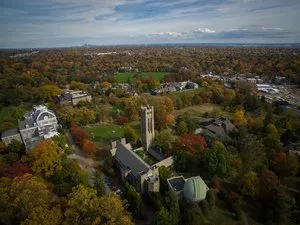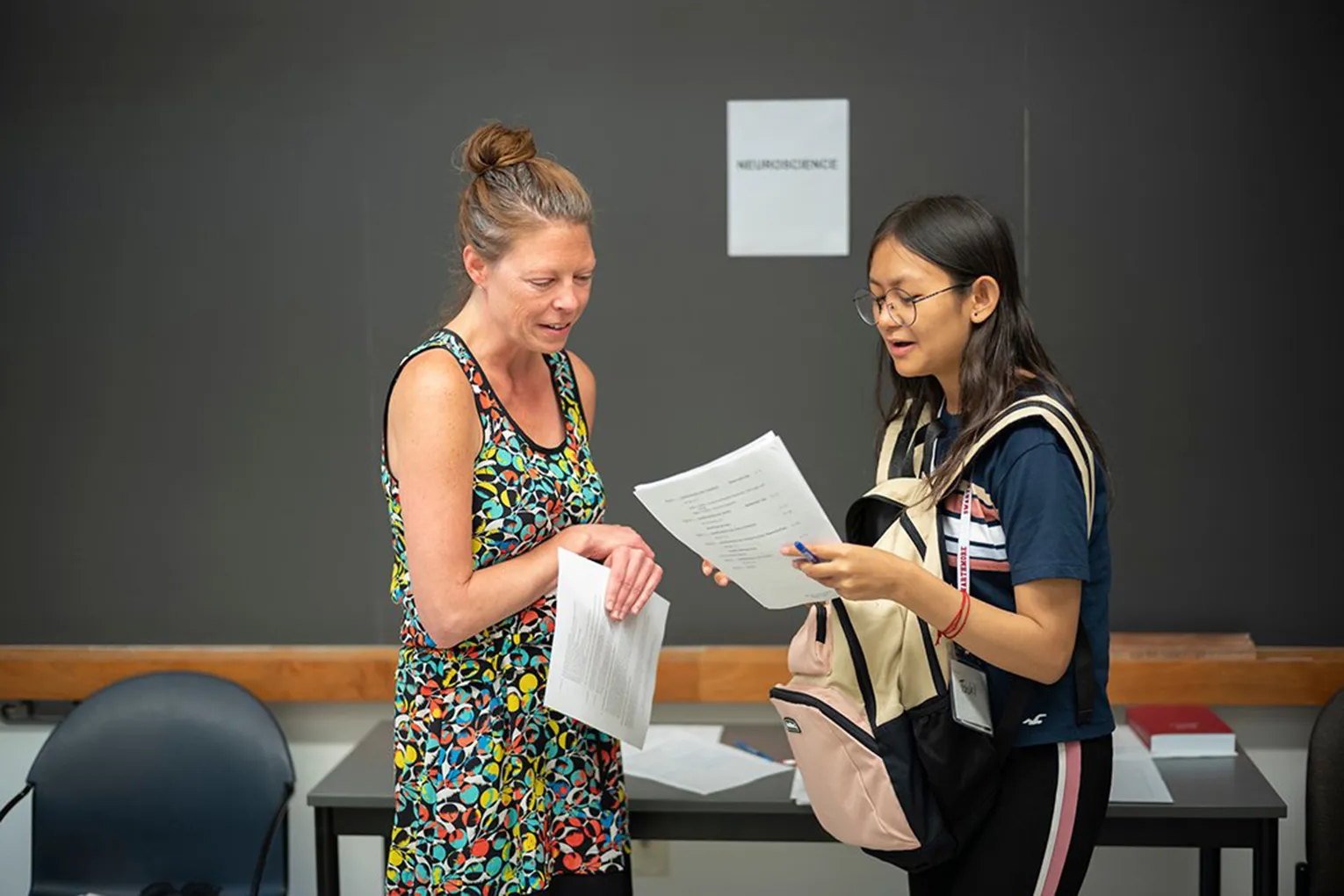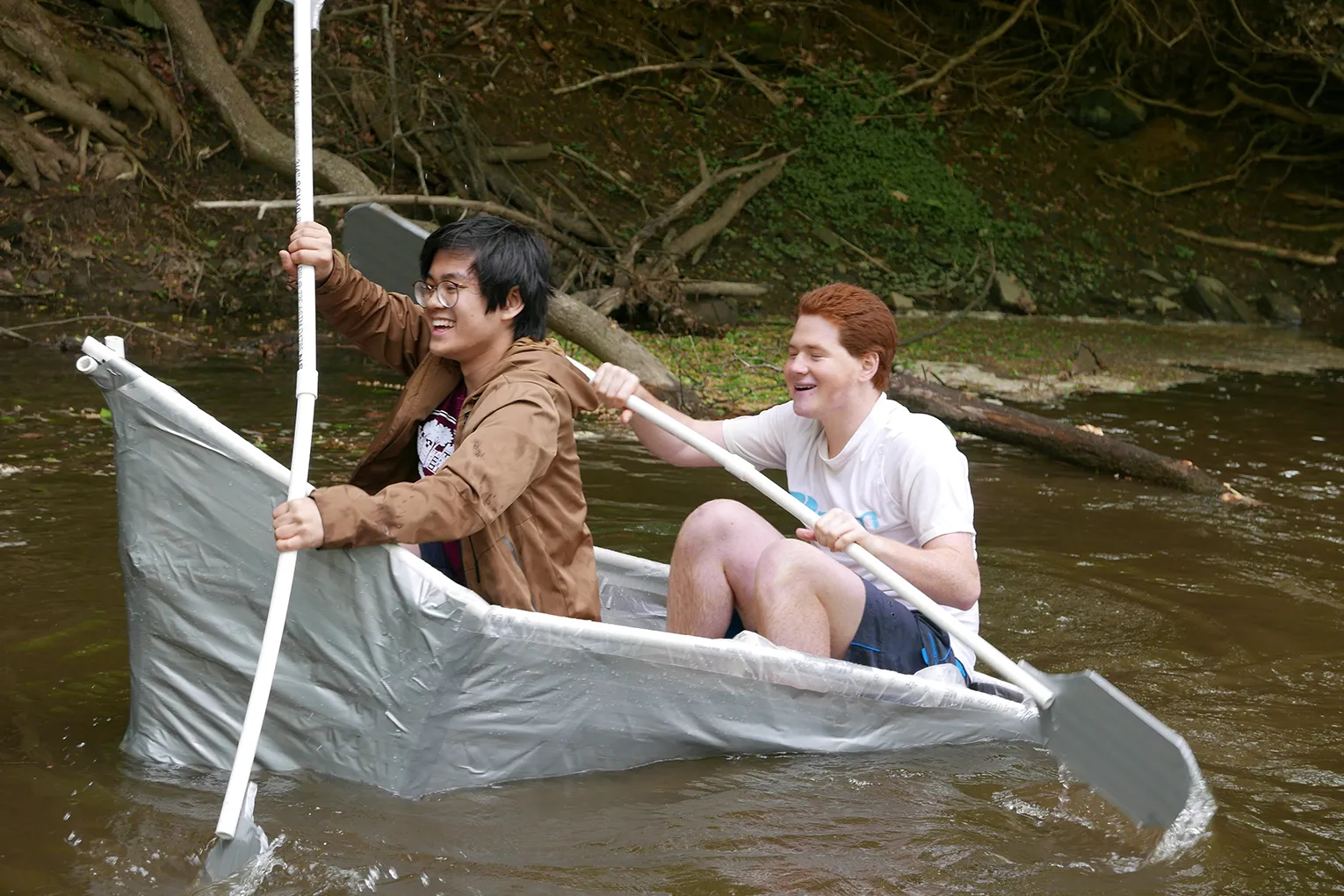Responsible Construction
Martin Hall’s renovation used responsible materials throughout, which were carefully chosen for their sustainability, durability, and low environmental impact. More than half of the wood used in the building’s construction was certified by the Forest Stewardship Council. The rest was either certified as from countries that do not use enslaved laborers, or salvaged from trees cut down during construction of this building, and of the Dining and Community Commons. Japanese Cedar salvaged from Martin Hall’s renovation was used in various seating areas. Elsewhere in the building, one can find salvaged birch at the first floor laptop bar, salvaged poplar at the Media Classroom, and salvaged red oak for the main stair's treads.
Responsible water use was another key consideration in both Martin Hall’s reduced building and pavement footprint, which allows for more water to seep into the ground and avoid run-off into the adjacent Crum Creek, and its landscaping, which does not require irrigation and improves water filtration and promotes evaporation. So as not to waste potable water, outdoor spigots are fed from a well originally installed by the Biology Department in 1995. A storm water tank, located under the Whittier Place Arts Plaza between Martin Hall and Lang Music Building, captures and holds water after it rains or snows in the area.
Martin Hall proudly lives into Swarthmore’s commitment to build and operate innovative, sustainable, and healthy spaces to learn, work, and live.



